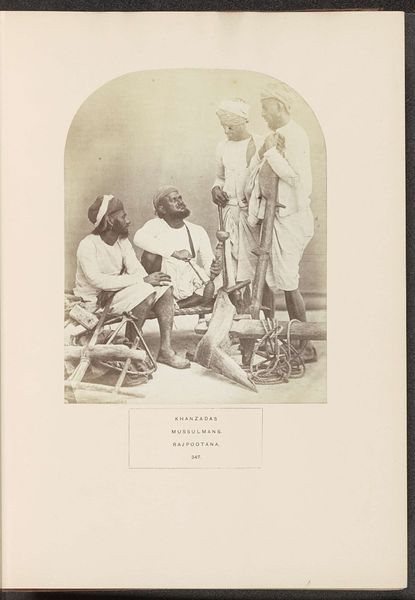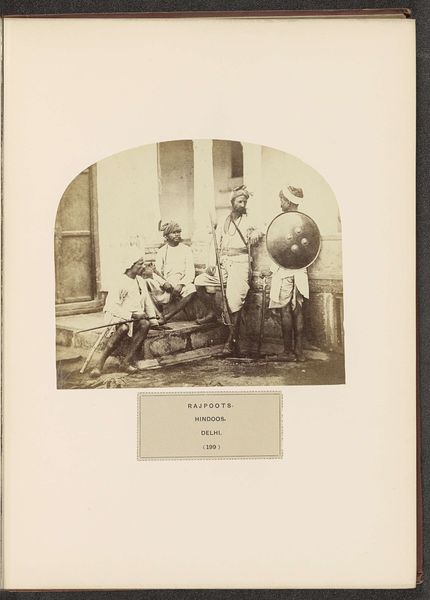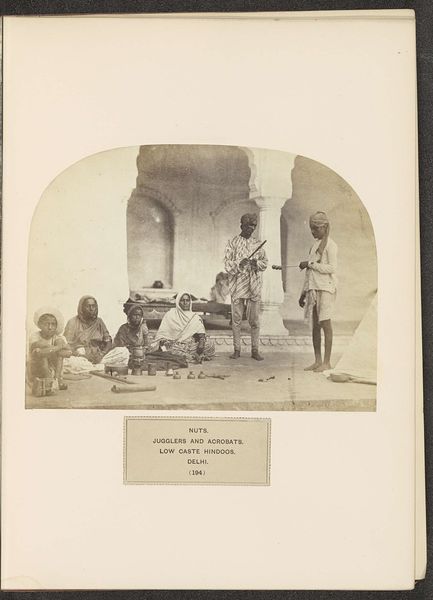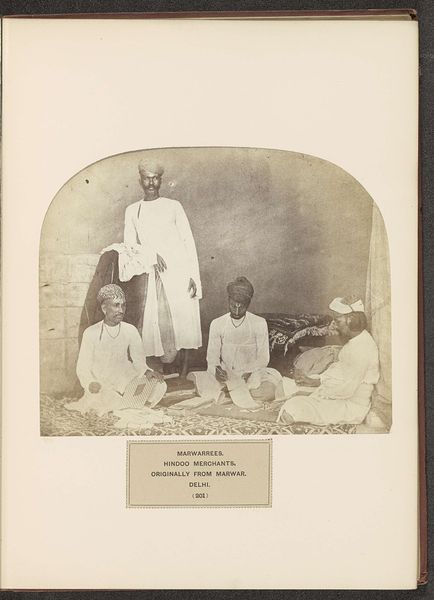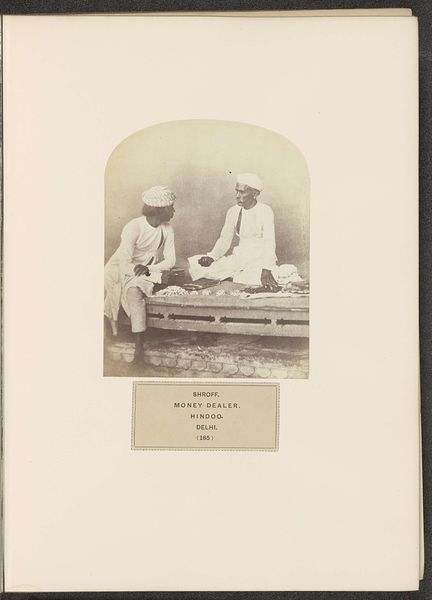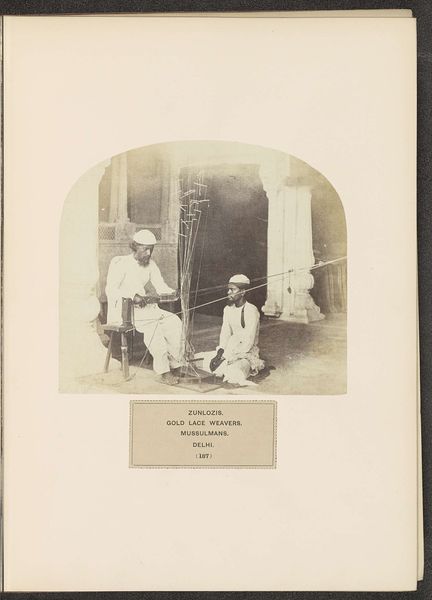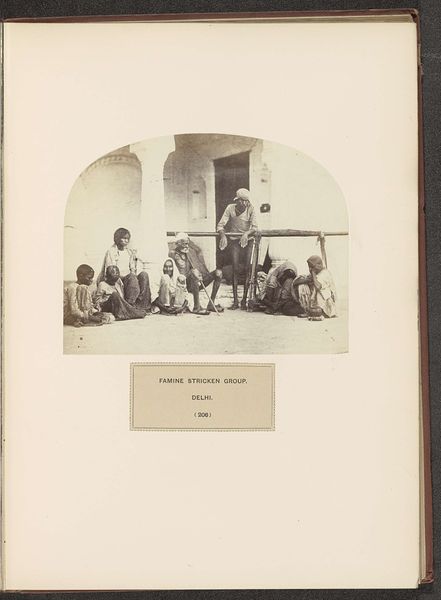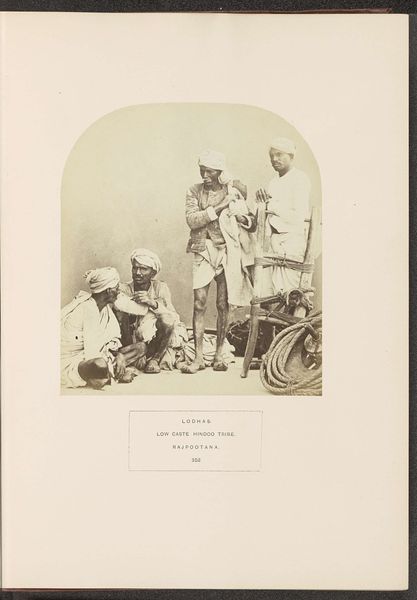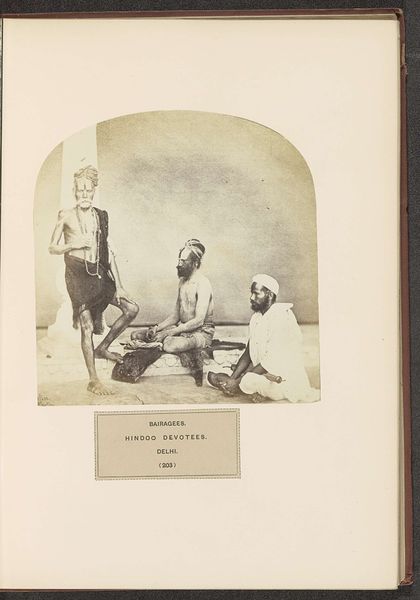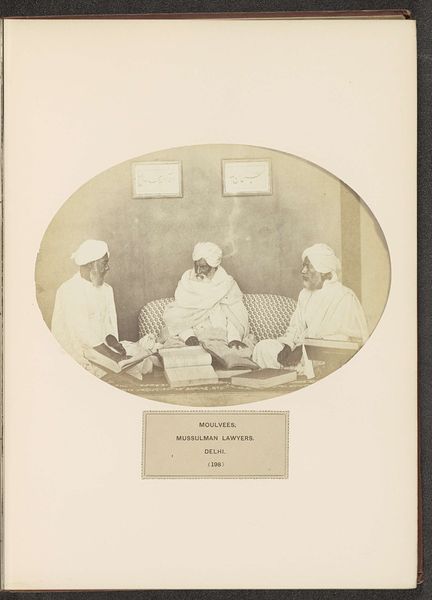
photography
portrait
photography
group-portraits
orientalism
Dimensions: height 143 mm, width 190 mm
Copyright: Rijks Museum: Open Domain
Curator: This is "Portrait of five landowners (zemindars) of Jat descent," a photographic print attributed to Shepherd & Robertson, dating from before 1874. It seems to be a fascinating example of early ethnographic photography. My immediate impression is how stark and composed it feels for such an early photograph. The tonal range in the print is also beautifully subtle. Editor: The composition certainly has a posed formality to it, but I'm curious about how it navigates representation and power. These Jat zemindars, as landowners, were undoubtedly figures of authority. How does photography here participate in maintaining or contesting that authority, especially within the colonial context? Curator: Well, photography, particularly portraiture, in the colonial context became a tool of documentation and often categorization. We can observe how their clothing, their postures, and the careful staging serve both to document them and to project an image that aligns with a certain Western understanding and control. Note the detailed attention paid to their attire and objects, hinting at their economic activities and status. Editor: Right, the choice of medium is significant. The materiality of a photographic print in the 19th century speaks to industrialization, global trade routes for materials, and its role in shaping perceptions of race, class, and culture, does it not? Curator: Precisely. The production of this image involved labor both visible and invisible, from the photographers in the studio to the subjects themselves. Editor: Absolutely. And it prompts a deeper reflection on labor, trade, and visibility during a period marked by global expansion and political upheaval. As for me, I find the entire dynamic of those gazes in the photograph telling of power structures beyond what’s immediately visible. Curator: Looking closely, the careful detailing of each individual within the group challenges simple generalization; but perhaps does it to other purposes we haven’t discussed? Editor: It's crucial to understand this piece within that network of coloniality, reminding us of its lasting implications in contemporary society. Thank you. Curator: Yes, and understanding that context underscores the work’s value as more than just an early example of photographic skill. It acts as a tangible document that complicates how we perceive both art and its complex past.
Comments
No comments
Be the first to comment and join the conversation on the ultimate creative platform.
